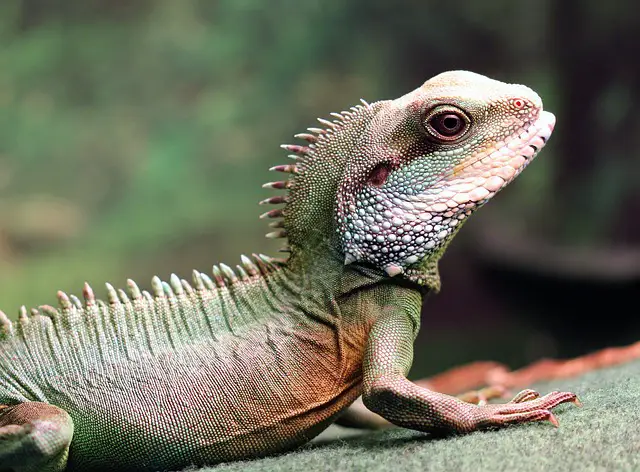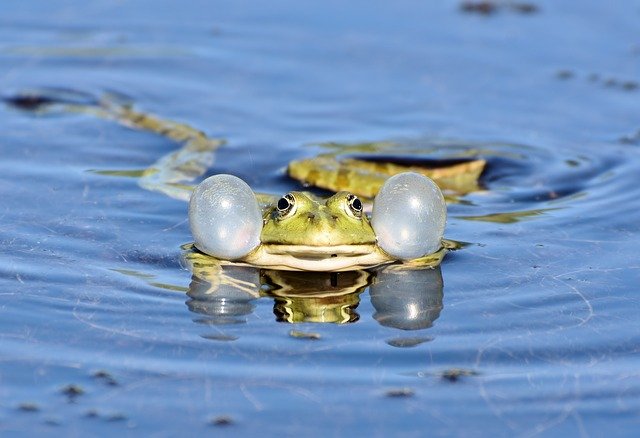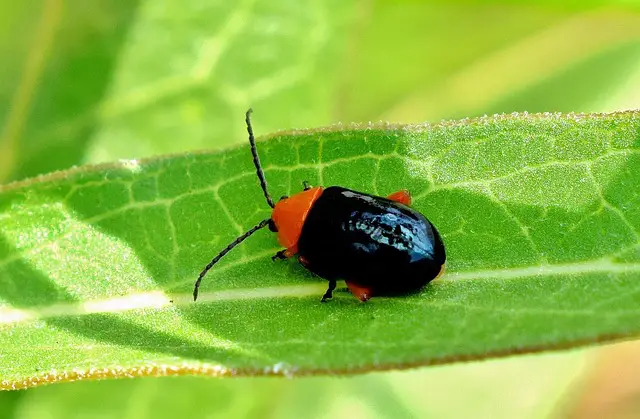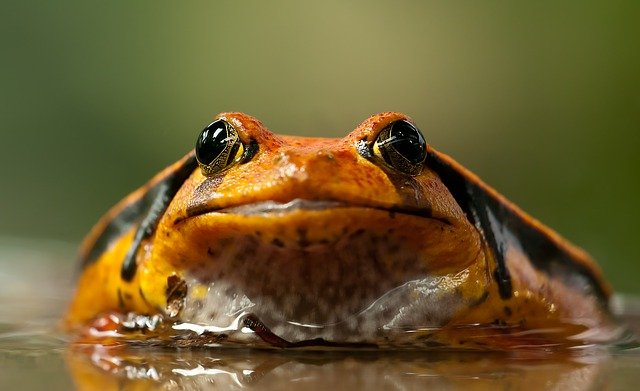One question frequently arises among owners is whether or not Chinese Water Dragons can drop their tails.
The answer is yes, Chinese water dragons are capable of tail autotomy or the ability to shed their tails as a defense mechanism voluntarily.
Autotomy is commonly adapted among many lizard species, including Chinese water dragons. When threatened or attacked, these lizards can detach their tails at a designated breaking point, allowing them to escape while the predator is left with a wriggling tail as a distraction.
While this may seem like a drastic measure, the tails of Chinese water dragons can regenerate over time, albeit with some differences in appearance and functionality.
Can Chinese Water Dragons Drop Their Tails?
One of the most exciting things about these lizards is their ability to drop their tails, similar to other reptiles such as geckos and iguanas.
When threatened or attacked, Chinese water dragons can detach their tails as a defense mechanism. This allows them to distract predators and quickly escape while their attacker is left with a wriggling tail.
It is important to note that while Chinese water dragons can drop their tails, it is not common. It is more likely to happen in younger dragons than in adults. Additionally, once a tail is dropped, it will not grow back like some other reptiles.
If a Chinese water dragon drops its tail, it is essential to provide proper care and monitoring to ensure the wound heals properly. This may include keeping the dragon in a separate enclosure to prevent infection and monitoring its diet and behavior for signs of distress.
Overall, while the ability to drop their tails is a unique and exciting feature of Chinese water dragons, it should not be relied upon as a primary defense mechanism. Proper care and monitoring can help ensure the health and well-being of these fascinating creatures.
Effects of Tail Dropping
Physical Effects
When threatened or attacked, Chinese water dragons can drop their tails as a defense mechanism. These reptiles’ tails are used for balance and swimming and store fat and nutrients. As a result, tail-dropping can have physical effects on the dragon.
The dropped tail will not grow back, and the loss of a tail can affect the dragon’s balance and mobility. The tail also contains vertebrae, which protect the spinal cord. If a dragon drops its tail, it may be more vulnerable to spinal injuries.
Behavioral Changes
Tail-dropping can also have behavioral effects on Chinese water dragons. Dropping their tails can be a stressful experience for these reptiles, and they may exhibit changes in behavior as a result.
After tail dropping, Chinese water dragons may become skittish and less confident after tail dropping. They may also become more aggressive towards other dragons or their handlers.
It is essential to give them time to recover and adjust to their new physical state.
In conclusion, while tail-dropping can be an effective defense mechanism for Chinese water dragons, it can also have physical and behavioral effects.
It is crucial to understand and be aware of these effects to ensure the health and well-being of these reptiles.
Preventing Tail Dropping
Chinese water dragons are known for their ability to drop their tails when they feel threatened. However, tail-dropping can be a stressful experience for the water dragon and may lead to health problems.
Therefore, pet owners need to take steps to prevent tail dropping.
One of the main reasons why Chinese water dragons drop their tails is stress. Pet owners should ensure their water dragon has a suitable habitat to prevent stress.
The habitat should be large enough to allow the water dragon to move around freely, including hiding places, basking areas, and water features. The temperature and humidity levels should also be maintained within the recommended range.
Another way to prevent tail dropping is to handle the water dragon gently and avoid sudden movements. When handling the water dragon, supporting its body and avoiding grabbing its tail is important. Pet owners should also avoid picking up their water dragon by the tail as this can cause tail damage.
In addition, pet owners should provide their water dragon with a healthy and balanced diet. A diet deficient in certain nutrients can cause stress and lead to tail dropping. Pet owners should consult a veterinarian or a reptile expert to determine the appropriate diet for their water dragon.
Overall, preventing tail dropping in Chinese water dragons requires providing suitable habitat, handling the water dragon gently, and providing a healthy and balanced diet. By taking these steps, pet owners can help their water dragon avoid the stress and health problems of tail dropping.
Recovery and Regrowth
When a Chinese water dragon drops its tail, it may take several months to regenerate. During this time, the dragon must be kept in a stress-free environment with proper nutrition and lighting to aid in regrowth.
Once the tail has been dropped, the wound will heal and scab over. It is essential to keep the wound clean and free from infection. This can be done by gently cleaning the area with a mild antiseptic solution and keeping the dragon in a clean, dry enclosure.
Regeneration of the tail will begin at the base and progress outward. The new tail will be a different color and texture than the original and may be slightly shorter. Over time, the new tail will grow and eventually blend in with the rest of the dragon’s body.
Monitoring the dragon’s behavior and health is essential during the regrowth process. A veterinarian should be consulted immediately if there are any signs of infection or other complications.
In conclusion, while it may take time for a Chinese water dragon to recover from tail loss, it can regrow a new tail and continue to thrive with proper care and attention.
Understanding Chinese Water Dragons
Chinese water dragons are fascinating reptiles that are native to the forests and waterways of Southeast Asia. They are known for their striking appearance, docile nature, and unique ability to drop their tails as a defense mechanism.
This section will explore some of the Chinese water dragons’ key characteristics and behaviors.
Appearance
Chinese water dragons are medium-sized lizards that can grow up to three feet in length. Their long, slender bodies and powerful legs allow them to climb trees and swim in water.
Their skin is covered in small, pointed scales that give them a rough texture. They are typically green or brown, with some individuals having stripes or spots on their skin.
One of the most distinctive features of Chinese water dragons is their long, muscular tails. These tails can make up to two-thirds of the lizard’s total body length and are used for balance, communication, and defense. In some cases,
Chinese water dragons may drop their tails to escape predators or distract them while they quickly get away.
Behavior
Chinese water dragons are diurnal, which means they are most active during the day. They are primarily arboreal, meaning they spend most of their time in trees, but they are also excellent swimmers and can hold their breath for up to 25 minutes underwater.
In the wild, Chinese water dragons are solitary creatures that only come together to breed. They are territorial and will defend their territory from other lizards, but they are generally docile and make great pets. They are also intelligent animals that can be trained to recognize their owners and respond to commands.
Diet
Chinese water dragons are omnivores, which means they eat plants and animals. In the wild, their diet consists of insects, small mammals, fish, and plants. As pets, they can be fed a diet of crickets, mealworms, fruits, and vegetables.
It’s essential to provide them with a varied diet to ensure they get all the nutrients they need to stay healthy.
In conclusion, Chinese water dragons are fascinating creatures that make great pets for those willing to provide them with the proper care and environment.
They are intelligent, docile, and can drop their tails as a defense mechanism. By understanding their appearance, behavior, and diet, you can provide your Chinese water dragon with the best possible care and ensure they live long and healthy life.
Tail Dropping in Reptiles
Tail dropping, also known as autotomy, is a common defense mechanism in many reptiles. When threatened, some species of reptiles can shed their tails, allowing them to escape from predators. This valuable adaptation will enable reptiles to survive in the wild.
General Mechanism
The mechanism behind tail dropping varies depending on the species. Generally, the tail is designed to break off easily at a predetermined location.
This is achieved through the presence of a fracture plane, a specialized area of the tail that is weaker than the rest, when the tail is under stress, such as when a predator tries to grab it, the fracture plane breaks, allowing the tail to detach from the body.
Once the tail has been shed, the reptile can escape from the predator while the tail continues to move and distract the predator. The tail will continue to twitch and move for several minutes, allowing the reptile to make a clean getaway.
Reasons for Tail Dropping
There are several reasons why reptiles drop their tails. The most obvious reason is to escape from predators. Reptiles can distract predators and escape with their lives by shedding their tails.
Another reason for tail dropping is to reduce the weight of the animal. Some reptiles, such as geckos, can shed their tails to reduce weight, allowing them to move faster and more efficiently.
This is particularly useful for species that live in trees or other areas where agility is essential.
Finally, some reptiles may shed their tails to get rid of parasites. The tail is often a target for parasites, and shedding the tail can help to remove these unwanted guests.
In conclusion, tail-dropping is a vital adaptation that allows many species of reptiles to survive in the wild. Whether it is to escape from predators, reduce weight, or eliminate parasites, shedding the tail is an effective defense mechanism that has evolved over millions of years.









